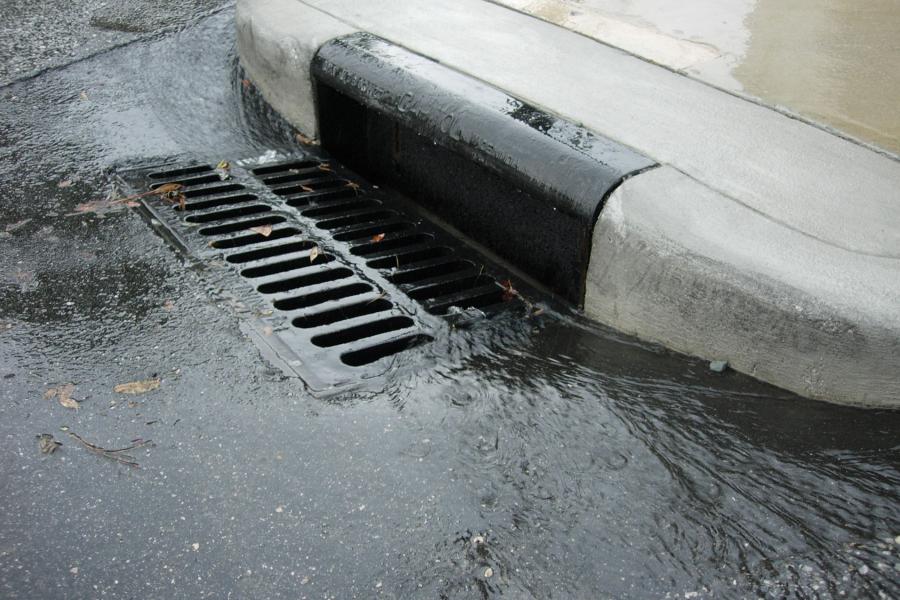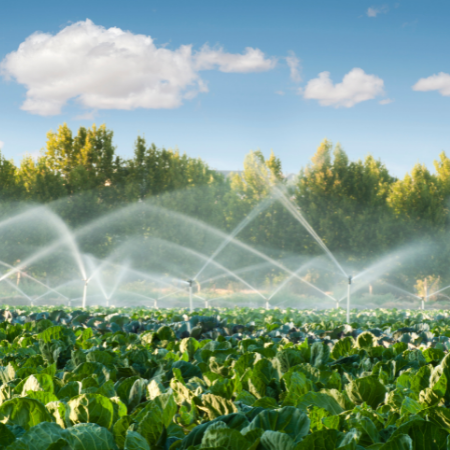Increased Flexibility for Water Infrastructure Projects Under ARPA Final Rule

By Carolyn Berndt
NLC Legislative Director for Sustainability
With the release of the American Rescue Plan Act (ARPA) Final Rule from the U.S. Department of the Treasury, local governments can celebrate some key wins, including expanded flexibility for water and wastewater projects under the State and Local Fiscal Recovery Funds (SLFRF).
In a comment letter to Treasury, NLC was among several commenters that asked for broader eligibility on water infrastructure projects beyond what is allowed under the Clean Water and Drinking Water State Revolving Funds.
While Treasury did not name additional federal statutes as eligible in the final rule, which would have potentially added to the challenges of determining eligibility by having to cross-reference across multiple programs, they provided detailed information on several key areas that expand eligibility water and sewer infrastructure.
Here is what local leaders need to know.
Stormwater Infrastructure
The final rule provides additional details and examples of stormwater infrastructure projects that are currently eligible under the Clean Water State Revolving Fund (SRF). These projects include gray and green infrastructure, as well as culvert infrastructure projects.

New in the final rule is language expanding the eligible uses to include stormwater system infrastructure projects regardless of whether there is an expected water quality benefit from the project. Treasury anticipates that this eligible use will allow recipients to manage increased volumes of stormwater as a result of changes to the climate. Treasury also notes that all stormwater infrastructure projects undertaken should incorporate updated design features and current best practices.
Private Wells and Septic Systems
Both the Clean Water and Drinking Water State Revolving Funds allow eligible use around the installation, repair, or replacement of private septic units and connecting homes served by a private well to a public water system.
In the final rule, Treasury provides that recipients may use SLFRF funds for an expanded set of infrastructure projects that improve access to and provision of safe drinking water for individuals served by residential wells. Eligible projects under this category include rehabilitation of private wells, testing initiatives to identify contaminants in wells, and treatment activities and remediation strategies that address contamination.
Remediating Lead in Water
The replacement of lead service lines, up to premise plumbing, is an eligible use under the Drinking Water SRF and continues to be an eligible use of SLFRF funds. Such projects are eligible regardless of the pipe material of the replacement lines and ownership of the property on which the service line is located. Lead service line replacement projects can serve households, schools, or any other entities.
In the final rule, Treasury stipulates that for lead service line replacement projects, recipients must replace the full length of the service line, and not just a partial portion of the service line. Treasury does note, however, that replacement of lead pipes within a home is not eligible under the final rule because the vast majority of lead contamination cases can be solved by replacing lead service lines (including on public and private property) and faucets and fixtures themselves. As such, replacement of lead pipes within a home would not be considered a cost-effective means for achieving the desired level of service and thus would not be a “necessary” investment.
The final rule also expands eligibility to include infrastructure projects authorized by the Water Infrastructure Improvements for the Nation Act under the U.S. Environmental Protection Agency (EPA). Eligible projects under these programs include the installation or re-optimization of corrosion control treatment, replacing lead service lines, replacing galvanized pipes downstream of a lead service line (other than lead pipes within a home as discussed below), and maintaining an inventory of the drinking water system’s service lines. Water quality testing, compliance monitoring, and remediation activities in schools and other childcare facilities, as well as activities necessary to respond to a contaminant, are eligible uses of SLFRF funds. Remediation activities such as the replacement of faucets, internal plumbing, and fixtures in schools and childcare facilities are also an eligible use of SLFRF funds.

Water filtration systems are eligible under the EPA grant programs and the final rule as long as they are installed as a permanent part of a facility’s system and not intended for temporary use. Conducting remediation, follow-up monitoring, and conducting public education and outreach about the availability of infrastructure programs, such as water testing and fixture replacement programs funded with SLFRF funds or otherwise, are also eligible projects.
The final rule also notes that “remediation of lead paint and other lead hazards” is a separate eligible use category and a broader range of programs and services may be eligible under that section, including investments that are not infrastructure, such as the provision of bottled water in areas with an action level exceedance for lead in water.
Dams and Reservoirs
Treasury’s final rule provides that funds may be used for rehabilitation of dams and reservoirs if the primary purpose of the dam or reservoir is for drinking water supply and the rehabilitation project is necessary for the continued provision of drinking water supply. This determination is consistent with an EPA memorandum providing a class exception (aka deviation) for the use of Drinking Water SRF funds for the rehabilitation of dams and reservoirs to support meeting the public health protection objectives of the Safe Drinking Water Act. Treasury has limited the scope of the final rule to dam and reservoir rehabilitation projects.
The final rule also notes that dam removal projects and associated stream and habitat restoration projects are eligible uses of the Clean Water SRF and continue to be eligible under the final rule when the removal implements either a nonpoint source management program plan or a National Estuary Program Comprehensive Conservation and Management Plan or when the removal will provide a water quality benefit. Habitat restoration projects more generally may also be eligible under the Clean Water SRF and the final rule if they constitute a form of stormwater infrastructure.
Expansion of Drinking Water Service Infrastructure
While the Safe Drinking Water Act limits the use of the Drinking Water SRF to public health needs of the existing population and projects to serve future population growth is not allowed under the Drinking Water SRF, the final rule does not include this same limitation.
The final rule provides that recipients may use SLFRF funds for projects that are needed to support the increased population in certain cases. ARPA limits projects to those investments that are “necessary.” Treasury interprets this to mean that the investments must be (1) responsive to an identified need to achieve or maintain an adequate minimum level of service, which for some eligible project categories may include a reasonable projection of increased need, whether due to population growth or otherwise and (2) a cost-effective means for meeting that need, taking into account available alternatives.
For this eligible use category, the project must also be projected to be sustainable over its estimated useful life, meaning the project can continue providing the adequate minimum level of service for its estimated useful life, taking into account projected impacts of changes to the climate and other expected demands on the source of water.
Non-Federal Matching Requirements for Authorized Bureau of Reclamation Projects
The final rule clarifies that SLFRF funds can be used to meet non-federal matching requirements of any authorized Bureau of Reclamation project, regardless of whether the underlying project would be an eligible use of SLFRF funds under the water and sewer infrastructure eligible use category.
This is effective as of March 11, 2021 and Treasury will provide further guidance to recipients on the scope of Bureau of Reclamation water projects and expenses covered by this provision.
Floodplain Management and Flood Mitigation Projects
Treasury notes that some floodplain management and flood mitigation infrastructure projects, including green infrastructure designed to protect treatment works from floodwaters and flood impact are currently eligible under the Clean Water SRF and therefore continue to be eligible under the final rule.

Irrigation
Treasury notes that the Clean Water SRF allows for some types of irrigation projects, particularly around reclaimed water projects, which are related to wastewater treatment and stormwater management.
Consumer Incentive Programs
The Drinking Water SRF and Clean Water SRF eligibilities include the development and implementation of incentive and educational programs that address and promote water conservation, source water protection, and efficiency related to infrastructure improvements. These include, for example, incentives such as rebates to install green infrastructure such as rain barrels or promote other water conservation activities. Treasury clarifies that such project types continue to be eligible under the final rule.
NLC’s fact sheets on the Clean Water and Drinking Water State Revolving Funds provide an overview of eligible uses and give examples of how communities have used these programs in the past.
While the fact sheets were developed specifically as a guide for communities around ARPA, they serve as a general overview of eligible project categories as local leaders are thinking about whether to apply for an opportunity under the Bipartisan Infrastructure Law.

